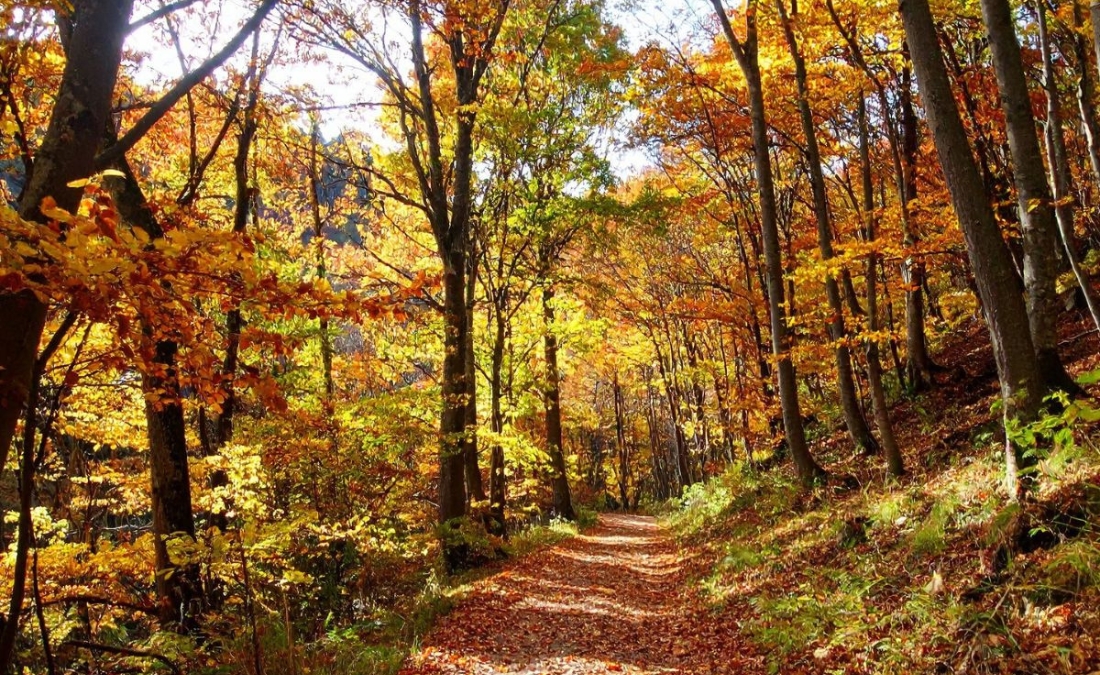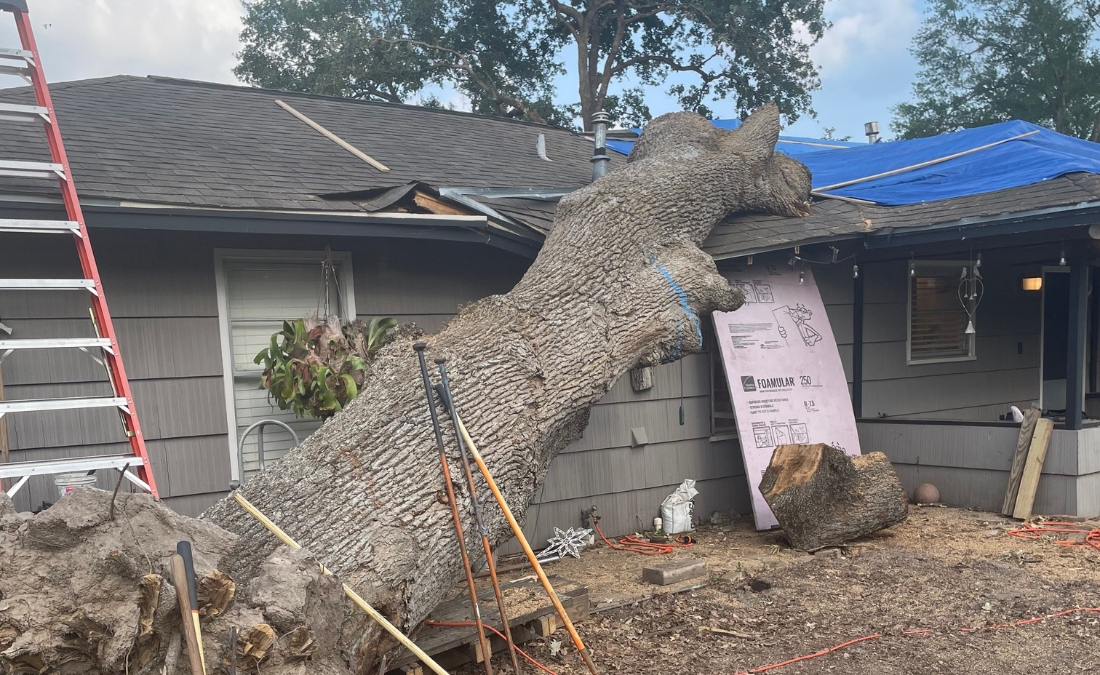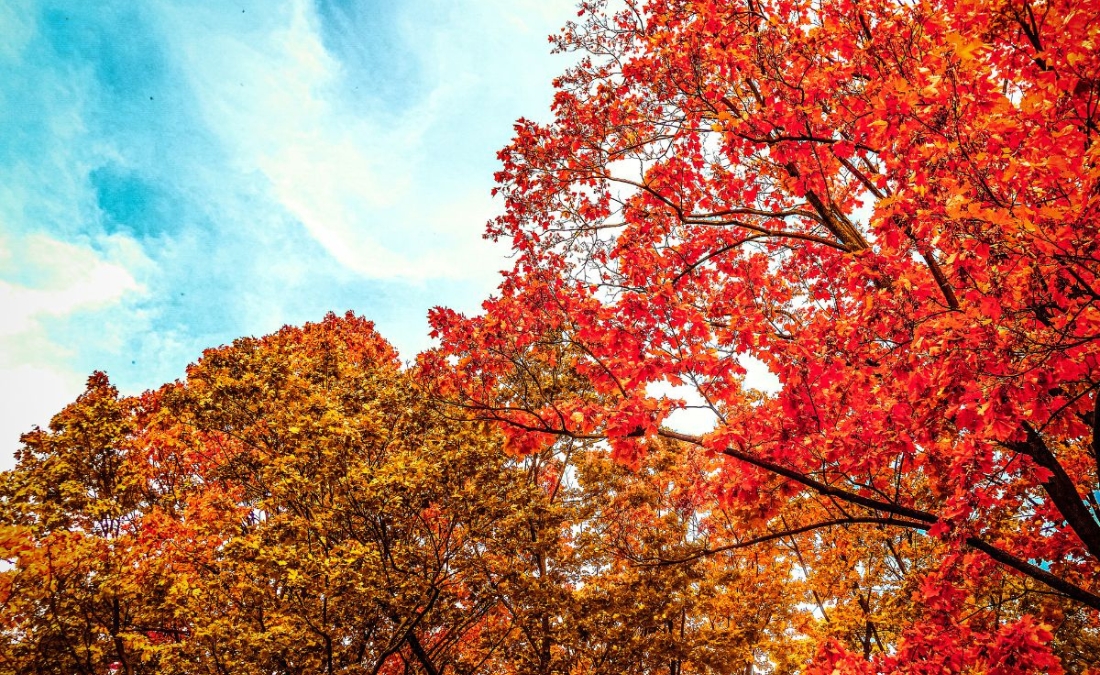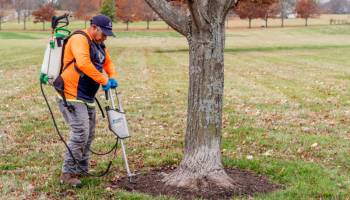Fertilization Fails: 6 Signs Your Wichita Tree Is Begging for Nutrients
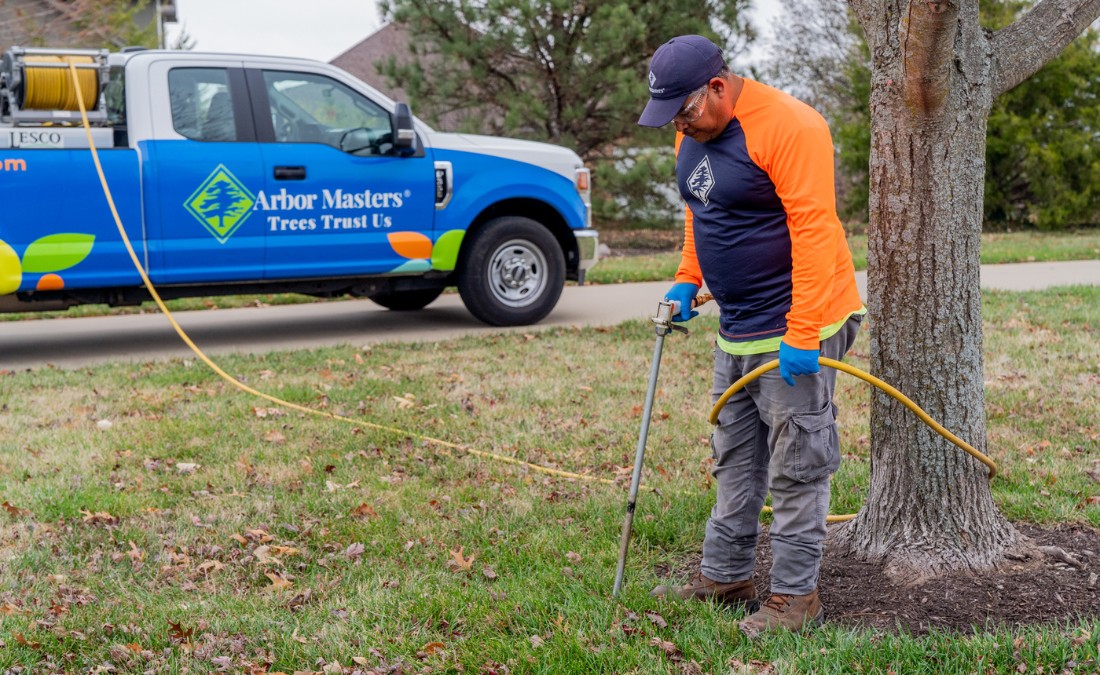
When fertilization is overdue, your tree shows it. Uncover 6 warning signs Wichita trees give when they’re low on nutrients – and how to help.
Have you ever planted a tree hoping it would thrive but months or even years later, it still looks small, sparse, or tired? While there are several reasons a tree might not grow as expected, one common (and often overlooked) issue is a nutrient deficiency.
Let’s look at the most common signs that your Wichita trees may need fertilization and how to go about getting them the nutrients they need.
Key Takeaways
- If your Wichita trees aren’t growing 12-24 inches annually or seem to have stopped expanding, they likely need fertilization to provide the energy required for new growth.
- Yellow leaves in summer often indicate iron chlorosis or other nutrient deficiencies that fertilization can correct.
- Always get a professional soil test from the Kansas State Soil Testing Lab rather than guessing, as symptoms may indicate pests or diseases rather than nutrient deficiencies.
- Fall fertilization allows trees to build nutrient reserves and expand their root systems before the growing season, while spring fertilization provides a growth kickstart.
- Hiring a reputable tree care company prevents over-fertilization and ensures trees receive the precise nutrient mixture they need based on soil test results.
6 Signs Your Wichita Tree Needs Fertilization
Knowing when to fertilize your trees is just as important as knowing how to do it. Many mature trees do not need regular fertilization, as the soil of Wichita is loamy and adequate to support a variety of plants.
However, when the soil ends up depleted of nutrients, that’s when fertilization can serve to give your trees a boost and help them continue growing. Some of the signs to look for that point to a tree needing fertilization include:
1. Stunted or Slow Growth
Trees should be growing every year, and when they aren’t, it is a sign that something is wrong. Most trees will grow between 12 inches and 24 inches in height yearly, though some slow-growing species will come in below that. While it may be impractical to measure trees each year, try to pay attention to the size of your tree and observe how it changes over time.
Trees need energy to put out new growth. If they aren’t expanding, it likely means they don’t have enough nutrients to produce energy, and that everything they have is going to maintaining the tree’s current growth.
2. Yellowing or Discolored Leaves
Most trees (with some notable exceptions) have bright green leaves in the spring and summer. These leaves are healthy and can assist the tree by performing photosynthesis. However, leaves may turn yellow or some other off-color in the summer when they are suffering from a nutrient deficiency.
Yellow leaves may point toward iron chlorosis. This condition develops when trees do not have sufficient iron. Adding fertilizer with iron content to the soil can help these trees recover.
Yellowing leaves can indicate a range of potential problems with your trees, from nutrient deficiencies to pest infestations. Always have an arborist inspect your trees to correctly determine what is causing the discoloration.
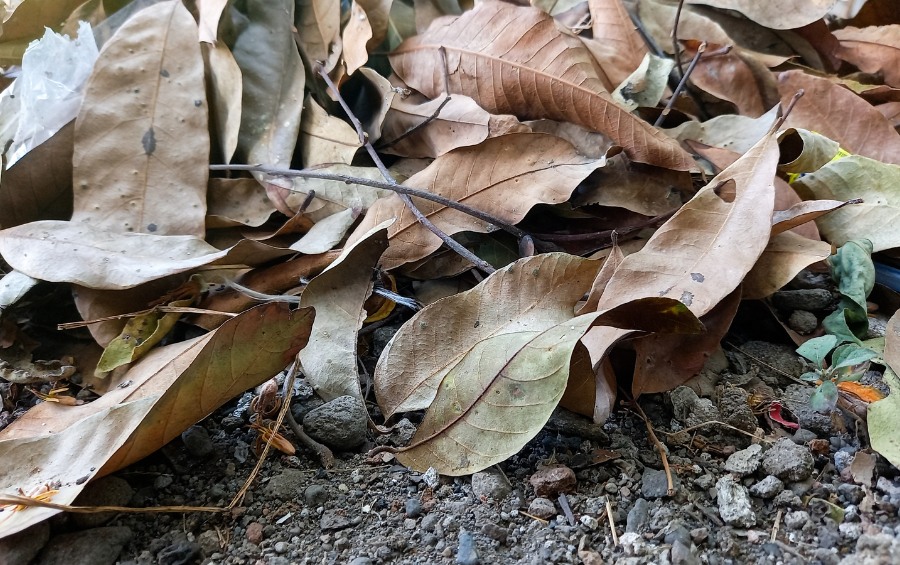
3. Sparse Canopy or Premature Leaf Drop
If a tree’s canopy is not full of leaves in the summer, it could be a sign that they do not have the necessary nutrients to create new buds. You may notice a few scattered branches throughout the canopy with fewer leaves than other branches, or you may even see your tree start to drop leaves, even though it’s still summer.
Without the energy to grow and sustain leaves, your tree will lose them, causing further stress as it loses avenues to performing photosynthesis.
4. Dead or Dying Branches
In cases where there is a severe deficiency of nutrients that has lasted for several seasons, you may begin to see dead branches appear in the canopy, as well as dieback of other branches. This can occur for numerous reasons, including root damage, insect infestations, and diseases. However, no matter the cause, they are a sure sign that you need professional help to save your trees.
5. Fewer Flowers or Poor Fruit Production
When you grow an ornamental tree in your yard (such as dogwoods or redbuds), you expect it to provide beauty and better aesthetics for your property. A nutrient deficiency can cause your tree to have less vibrant flowers or ones that don’t even bloom.
Fruit trees also feel the pain from a lack of nutrients in the soil. They won’t produce as vibrant or good-looking fruit when they are struggling to get nutrients. Instead, they will rely on the limited nutrients to just maintain their current size rather than expand and produce fruit.
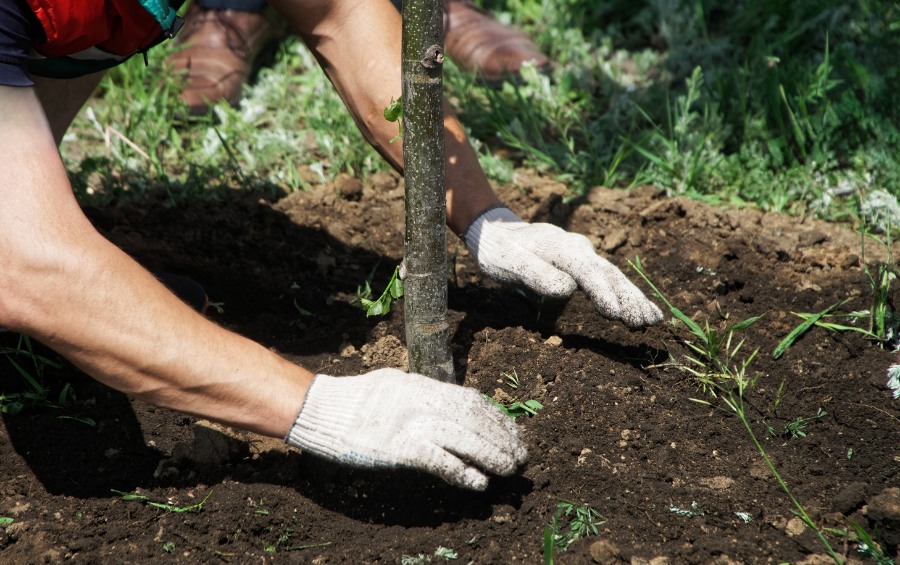
6. Young Tree Still Getting Established
Young trees don’t have the same extensive root systems as mature trees, which allows them to seek out nutrients from a wider area of the soil. A nutrient deficiency near the planting site can lead to a young tree that struggles to establish itself.
Most nurseries recommend holding off on fertilizing saplings during their first year. After that, it’s a good idea to fertilize them regularly until they’re well established and able to grow on their own.
Always Get a Soil Test Before Jumping to Fertilization
Even if you notice some of these signs in your trees, it doesn’t necessarily mean your tree has a nutrient deficiency and needs fertilization. Many of these symptoms could also indicate other problems with your trees, such as pests or diseases.
Before adding any fertilizer or having a company perform deep-root fertilization, we recommend having a professional conduct a soil test to determine the specific needs of your soil. While you can find soil testing kits at any hardware store in Wichita, those are often cheap and unreliable. Instead, get a soil test from the Kansas State Soil Testing Lab for a nominal fee. These tests can provide a basic overview of the pH and nutrient content of your soil or offer a more comprehensive look at its composition.
With the information you gain from a soil test, you will be able to pick the right fertilizer to effectively correct any deficiencies in the soil.
Frequently Asked Questions About When to Fertilize Your Trees
Fertilization can be a complicated topic, and many homeowners don’t know how and when to fertilize their trees. To help you better understand the service, we’ve answered some common questions so you can see why we fertilize in Wichita.
When is the best time to fertilize your trees in the Wichita area?
The best time to fertilize your trees in the Wichita area is in the fall. Fall fertilization allows trees to expand their roots and build up a reserve of nutrients to use during the growing season. Besides fall, spring is also a great time to fertilize your trees, giving them a kickstart to growing.
Can fertilizing during a drought help my trees?
No, you should not fertilize your trees during a drought, as this can cause stress and damage to their roots. Trees need water to process fertilizer. During a drought, the fertilizer will sit underground and can burn the roots. It also forces the tree to waste its precious water on processing the fertilizer. Instead, wait until after regular rainfall has returned to Wichita before fertilizing.
Do all trees need fertilization?
No, not all trees need fertilization. Most mature trees can survive without fertilization, as their soil can provide sufficient support. However, trees in urban environments and landscapes do not benefit from the same amount of decomposing matter as trees in forests. This is why a soil test is so important, as it tells you if your trees actually need a nutrient boost or if the symptoms they’re displaying are due to something else.
Can I fertilize trees myself?
While it is possible to purchase fertilizer and apply it yourself, this is often a risky proposition. You risk over-fertilizing the trees or using the wrong mixture that could overcompensate in one macronutrient while ignoring a deficiency of another. To ensure your trees get precisely what they need, hire a reputable tree care company that can handle the job right.
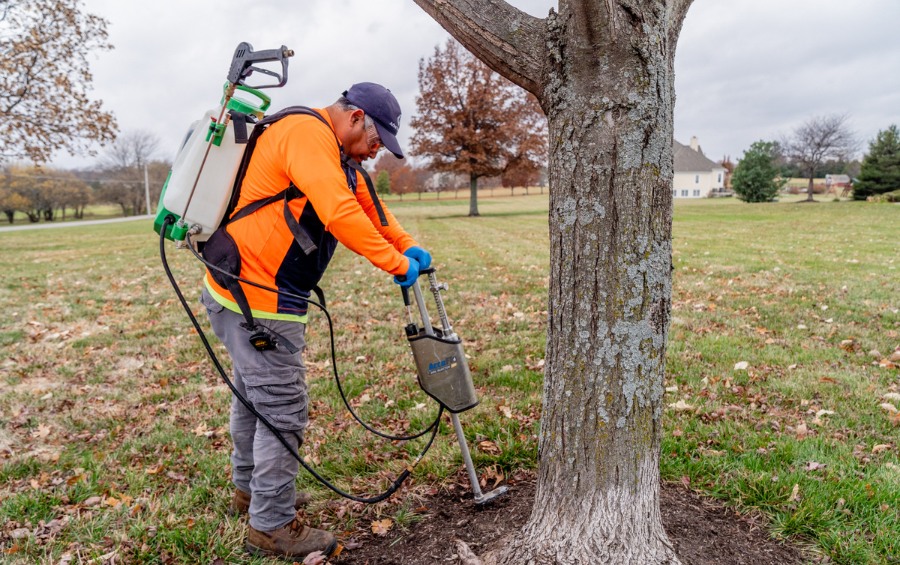
Are Your Trees Looking Off? Schedule Fertilization with Arbor Masters Today!
Nobody wants a tree on their property that appears stunted or struggling to grow. A little fertilizer can go a long way to making your tree healthier and more aesthetically pleasing. When you want to ensure your tree gets exactly what it needs, trust the dedicated team at Arbor Masters of Wichita.
We use deep-root fertilization to deliver fertilizer directly to your plants’ roots, allowing them to easily access it and reducing the risk of runoff. Call us today at 316-838-3111 or request a quote online.

Get the latest local news, tree care tips, special offers, and company updates directly to your inbox! It's easy to subscribe and there's no spam - we promise.
"*" indicates required fields


